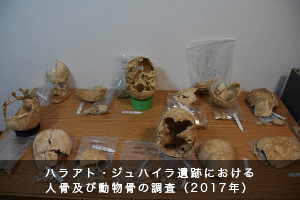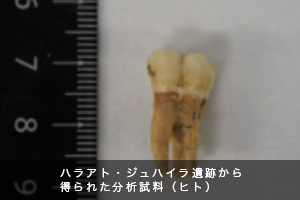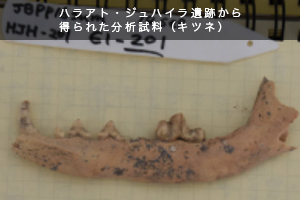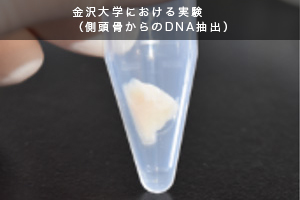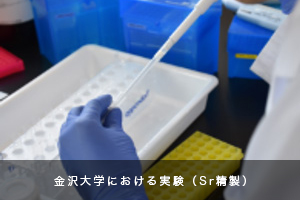覺張 隆史(がくはり たかし)
遺跡から出土する生物遺体(人骨・動物骨・植物など)は、過去の生物が生存していた際に記録された生体分子情報を保持している。生物遺体から生体情報を抽出し、考古学及び人類学の研究に新たな解釈を加える学問領域を「考古分子生物学」と呼んでいる。考古分子生物学は、DNA、RNA、タンパク質、脂質、糖質など多様な分子種から遺伝情報や生態情報を抽出することで、今まで解明できなかった考古学・人類学的仮説を検証することを可能にしてきた。
本プロジェクトでは、遺跡出土人骨及び動物骨のゲノム解析及び同位体分析によって、西アジア初期農耕牧畜民の移動性について時空間的変遷を可視化し、それらの結果が考古遺物の流動性とどの様に対応するか統合的な検証を試みる。
主な著書・論文
・Takashi Gakuhari, Shigeki Nakagome, Martin Sikora, Simon Rasmussen, Morten Allentoft(他24名)(2019). Jomon genome sheds light on East Asian population history, BioRxv (doi: https://doi.org/10.1101/579177).
・Hugh McColl, Fernando Racimo, Lasse Vinner1, Fabrice Demeter, Takashi Gakuhari(他58名)(2018). The prehistoric peopling of Southeast Asia. Science. 361. pp. 88-92.
・Kae Koganebuchi, Takashi Gakuhari(他10名)(2018). A new targeted capture method using bacterial artificial chromosome (BAC) libraries as baits for sequencing relatively large genes. PloS one 13(7) e0200170
・Hidetoshi Someda, Takashi Gakuhari(他11名) (2016). Trial application of oxygen and carbon isotope analysis in tooth enamel for identification of past-war victims for discriminating between Japanese and US soldiers, Forensic Science International. 261:166. e1-5
・Takashi Gakuhari, Hajime Komiya, Junmei Sawada, Tomoko Anezaki, Takao Sato, Kenichi Kobayashi, Shigeru Ito, Koichi Kobayashi, Hiroyuki Matsuzaki, Kunio Yoshida, Minoru Yoneda (2015). Radiocarbon dating of a human remains and dog burials from the Kamikuroiwa rockshelter. Anthropological Science. 123. pp. 87-94.
・Taichiro Ishige, Takashi Gakuhari (Equally contributed), Kei Hanzawa, Tomohiro Kono, Indra Sunjoto, Jum Rafiah Abdul Sukor, Abdul Hamid Ahmad and Hisashi Matsubayashi (2015). Complete mitochondrial genomes of the tooth of a poached Bornean banteng (Bos javanicus lowi; Cetartiodactyla, Bovidae). Mitchondria DNA. 10.3109/19401736.2015.1033694.
・覚張隆史 (2015). 歯エナメル質の炭素安定同位体比に基づく三ツ寺Ⅰ・Ⅱ遺跡出土馬の食性復元. 動物考古. 32. pp. 25-37.
・Takashi Gakuhari, Michiko Intoh, Takanori Nakano, and Minoru Yoneda (2014). Strontium Isotope Analysis of Prehistoric Faunal Remains Excavated from Fais Island in Micronesia. People and Culture in Oceania. 29. pp. 69-81.







